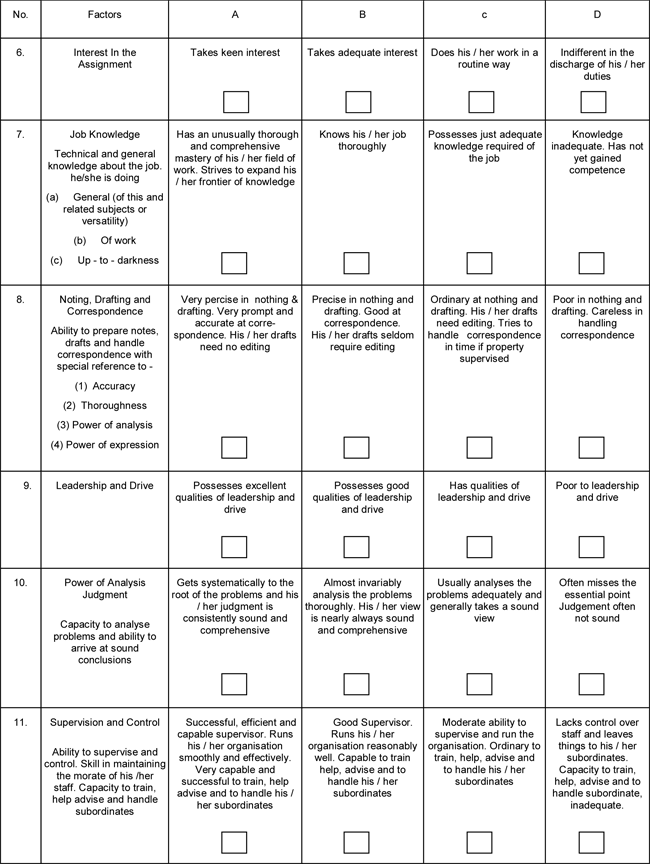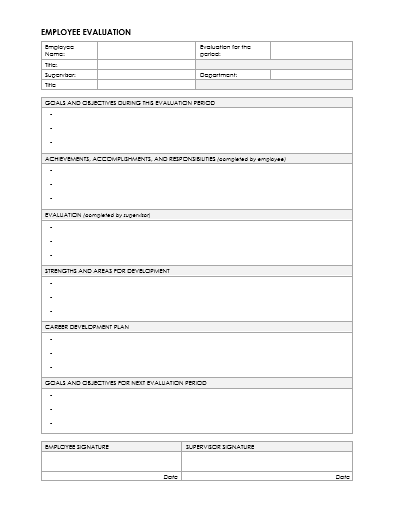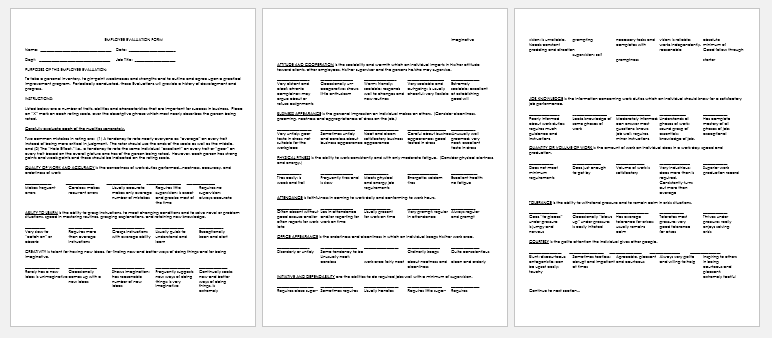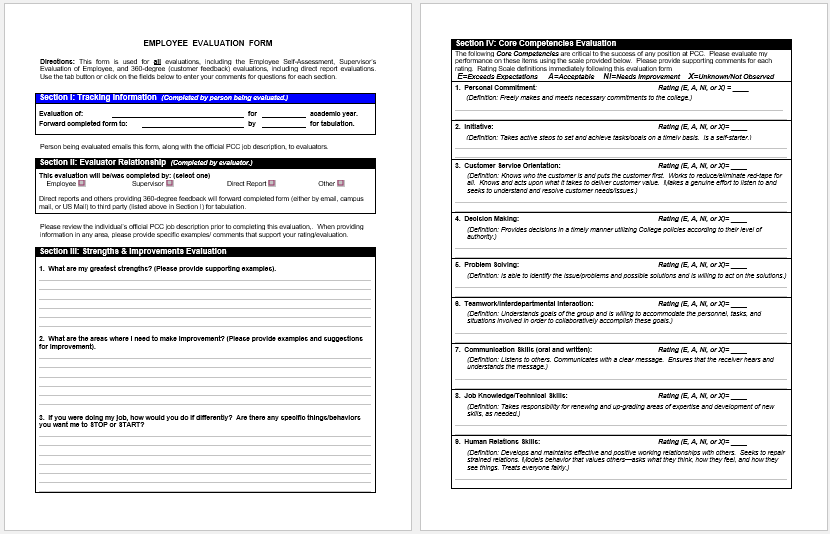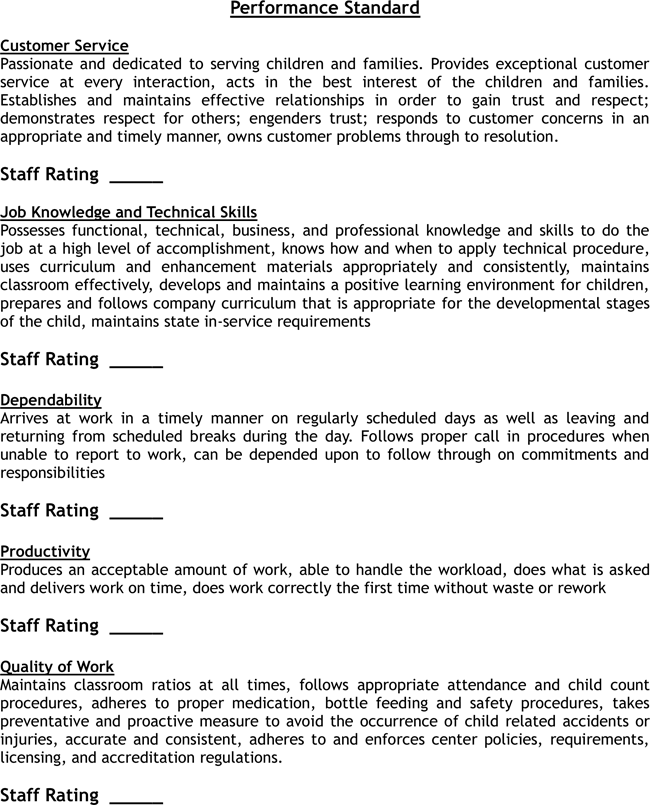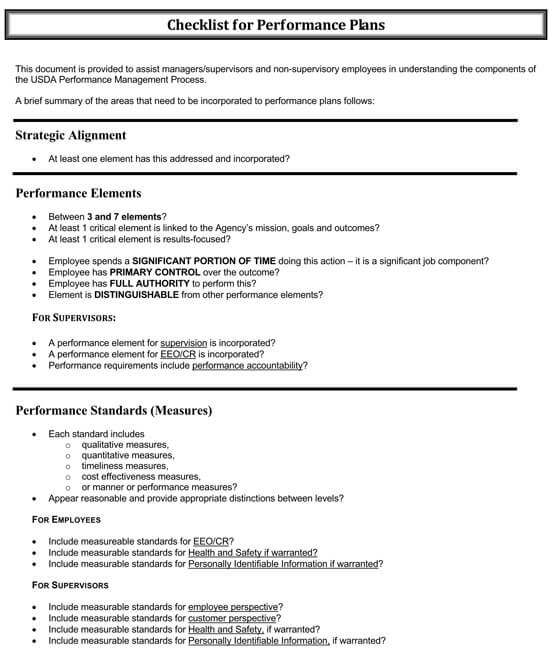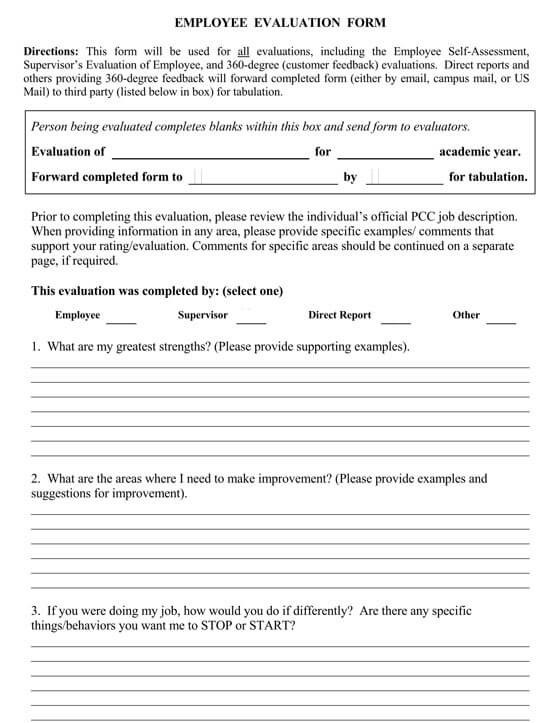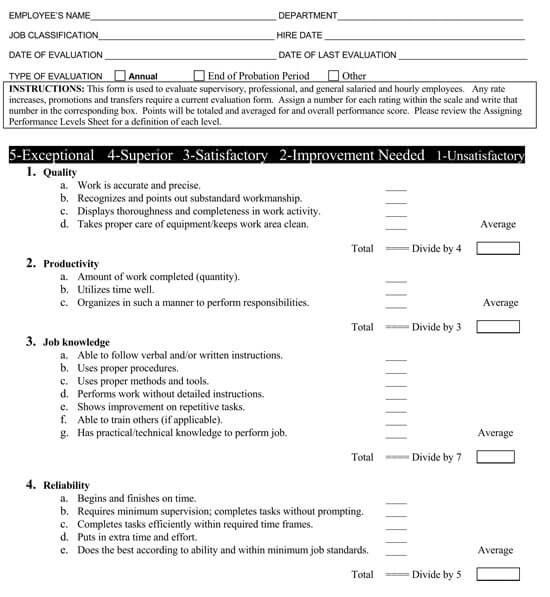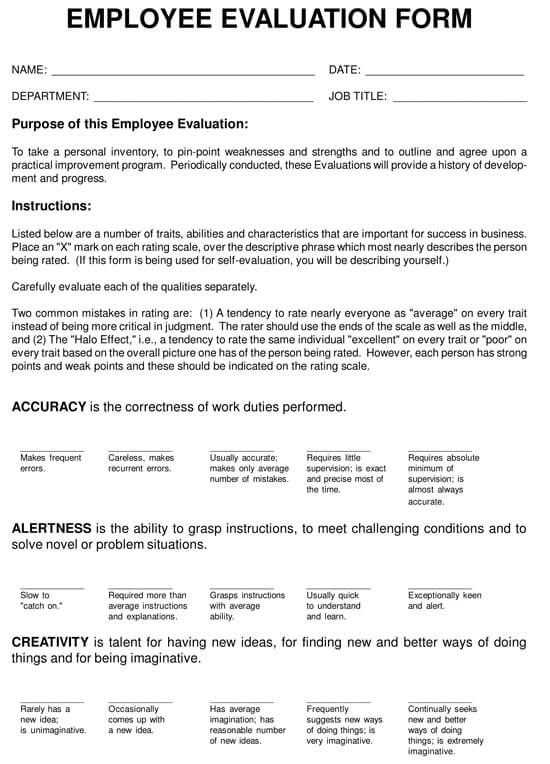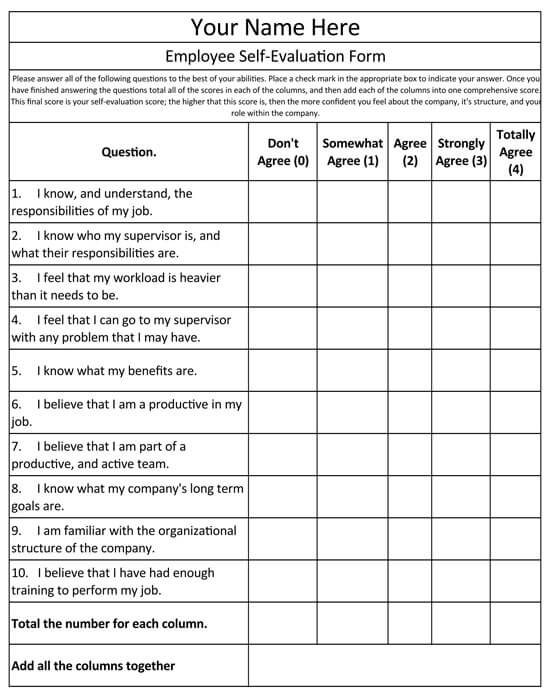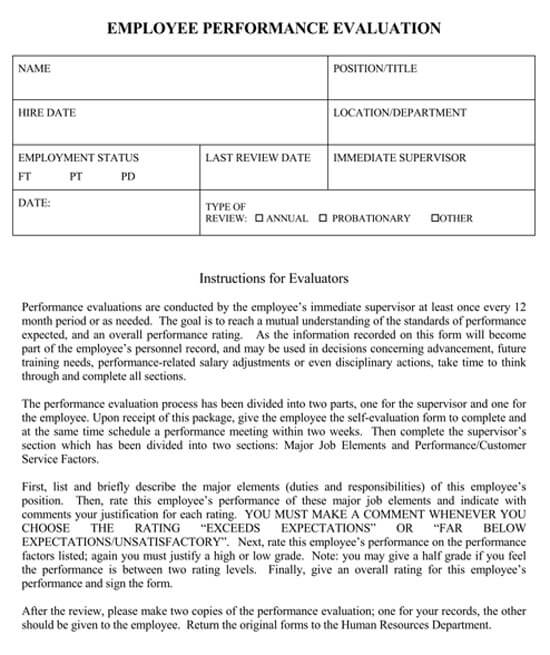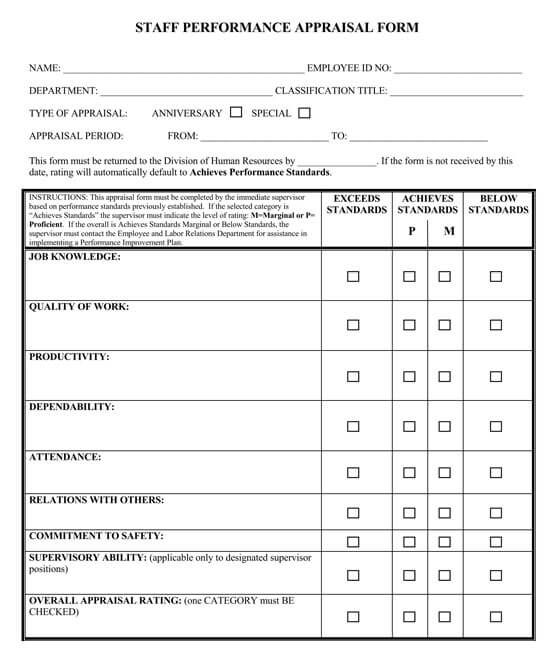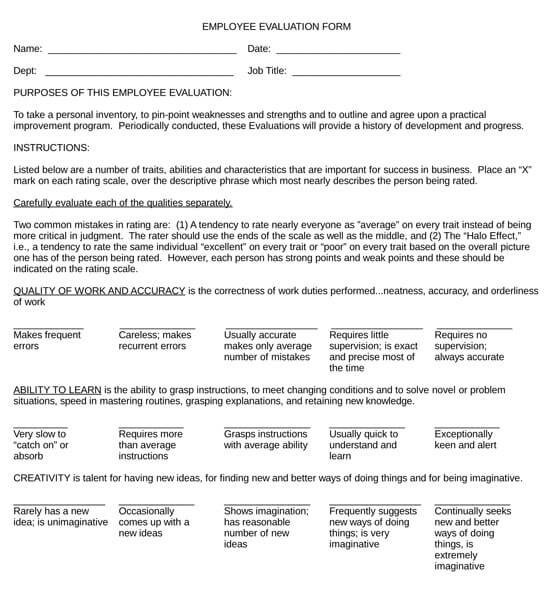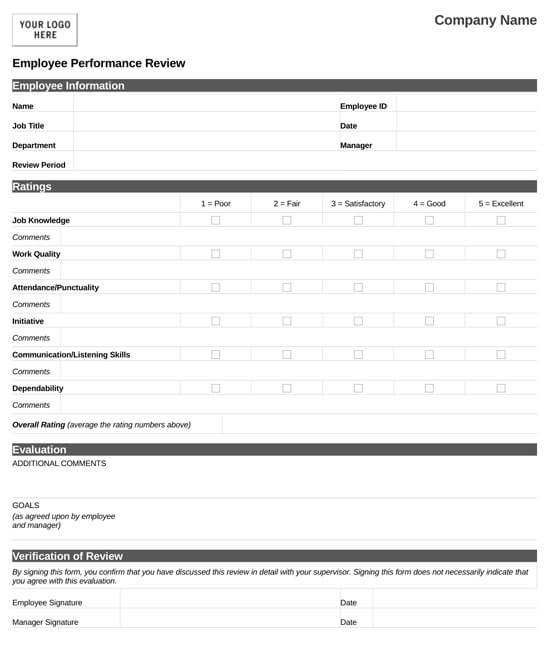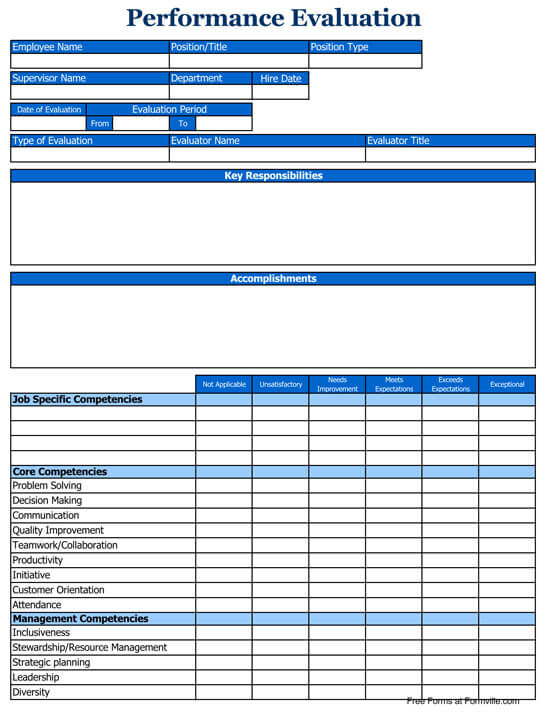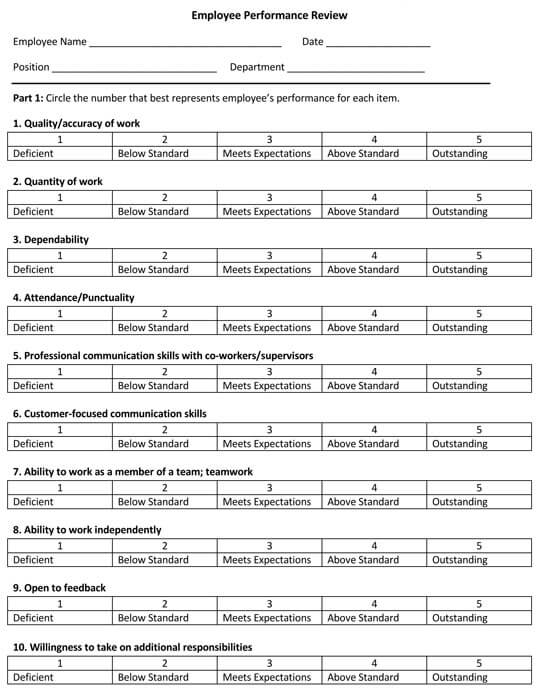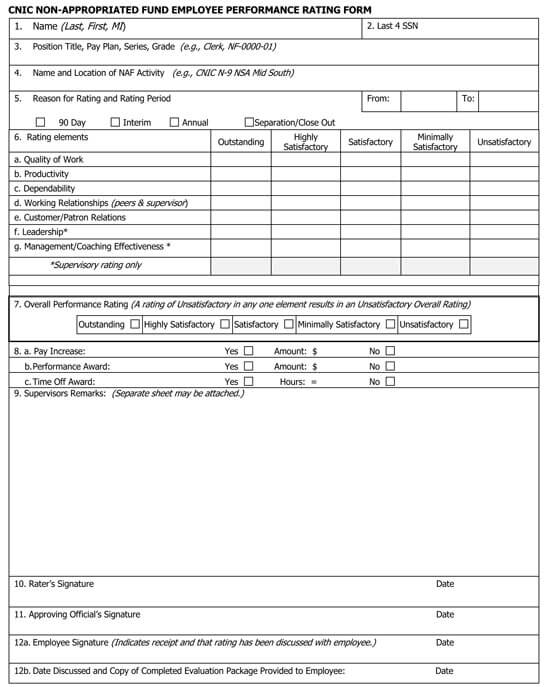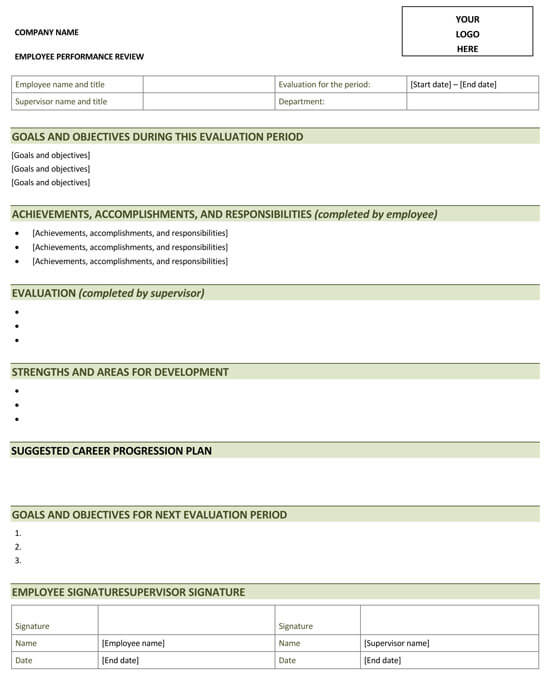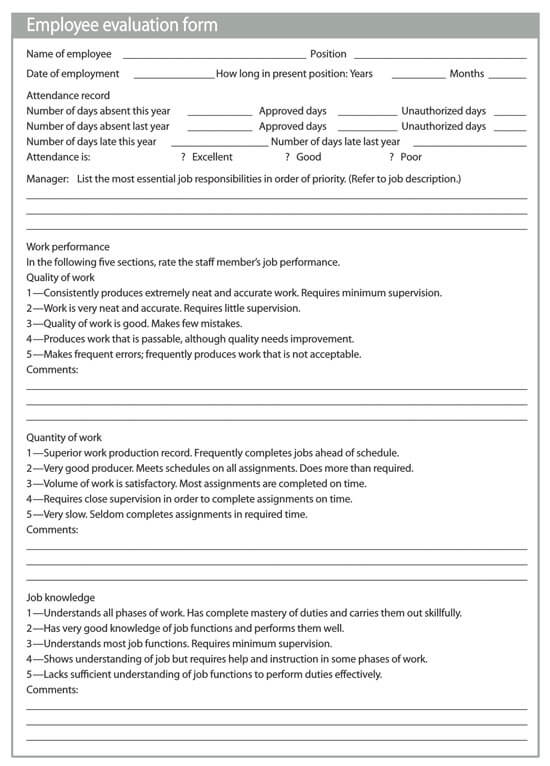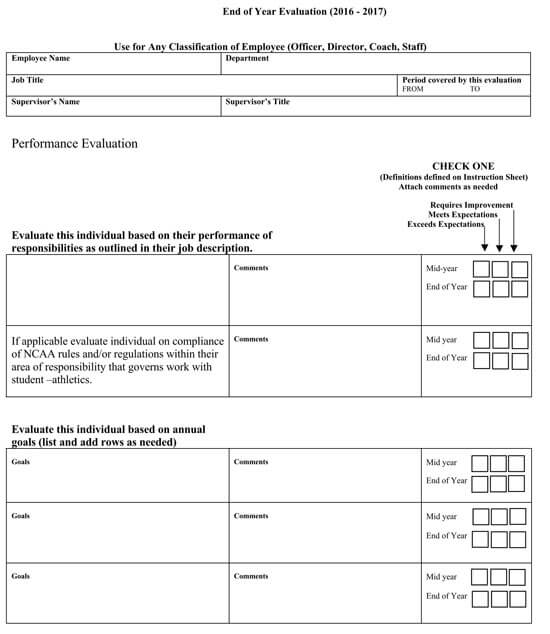An Employee Evaluation Form refers to a document that is used to assess the performance of an employee within a workplace. This document is very significant as it creates a paper trail necessary for supporting decisions made by the human resource departments.
The success of any organization or company greatly depends on the performance of employees. If your employees are well motivated and are committed to their respective workplaces, their productivity and performance will automatically improve. Eventually, your organization will achieve its goals and objectives much easily. But how do you know if your workforce is performing their best in your organization? Well, the sure way of knowing this is through performing performance evaluations using an Employee Evaluation Form.
For instance, HR can use the feedback from the Employee Evaluation Form to conduct employee promotions, give awards, or terminate an employee. Usually, companies prefer doing the Employee Evaluation Form at specific intervals, such as once or twice a year. In this article, we will take you through some of the benefits of conducting an Employee Evaluation Form, what to include in the evaluation forms, best practices, and other main considerations to put in place when preparing the Employee Evaluation Form.
What to include in an Employee Evaluation Form?
The component of an Employee Evaluation Form will vary depending on the company’s policies and information needed. However, a typical Employee Evaluation Form should contain the following:
Employee information
The first thing to include in your Employee Evaluation Form is the names and personal details of the employee. These may include the employee name, job title, and employment identification, among other details.
Evaluator information
This section should contain information about the individual carrying out the evaluation. For instance, you can include their name, position held (HR Manager/Supervisor/ General Manager).
Evaluation period
The Employee Evaluation Form should contain the dates on which the evaluation is done and for what period. This helps in understanding the progress the employee has made ever since the last evaluation was conducted.
Rating scales
The rating scales form the most significant part of the evaluation form. When coming up with the rating system, make sure it’s easily understandable by all. Rating systems make employees understand why they are given a specific grade. Some of the most common rating scales include the 1-0, 1-5, and 1-100. If for example, you select a rating scale of 1-5, you can define it in the following manner;
- 1 represents very bad
- 2 represent bad
- 3 represent neutral
- 4 represent good
- 5 represent very well
Evaluation points
If at all you are looking into a specific skill set within a workforce, then it’s recommended you list them down so as to rate them in points.
Goals
For an employee evaluation to be meaningful, it should inform the employee of their current progress to create room for future improvements. That’s said, an Employee Evaluation Form should also contain an easy-to-track the progress of employees’ performance. Also, it should inform the workforce of the expected targets and goals.
Space for additional information
The evaluation form should have some blank space where the employees can honestly express their comments, suggestions, or ideas for future improvement. Besides, the extra space should encourage the employees or any other party to note down any challenges that prevent them from realizing their full potentials.
Signatures
The last part of the Employee Evaluation Form is signatures. By putting down their signatures, each party acknowledges that they have understood the contents and process of the evaluation.
Best Practices When Creating the Form
Creating an Employee Evaluation Form requires concentration, time, and some levels of professionalism. In order to save yourself from the tiresome process, you can download our Employee Evaluation Forms for free. The forms are professionally created to assess your workforce performance without many difficulties. However, if you want to create one on your own, the following are some of the best practices to follow:
Collect the right information
Before you proceed with writing your evaluation form, make sure you have the right information at your disposal. Get clear about your main purpose and objective of performing the evaluation process.
Customize forms for each job position
Since there are different positions in your workplace, it’s important that you create an evaluation form that best evaluates an employee according to their job description and specific roles.
Related: Employee training evaluation forms
Select your rating scale wisely
It’s very crucial to make your rating scale fair, consistent, and fit for your evaluation. While some job roles are better assessed using numerical ratings, others will require you to use descriptive rating or even multi rating scales. Therefore, depending on the expected feedback, always use the best suitable and convenient rating scales.
Make your goals SMART
When defining your evaluation goals, make sure you make them SMART, i.e. (Specific, Measurable, Achievable, Realistic, and Timely).
Benefits of Employee Evaluation Form
Following are a few benefits of using the employee evaluation form:
- It helps maintain organization goals: Employee Evaluation Forms helps organizations to understand the strengths and weaknesses of their workers. With such information at hand, the management can design goals that better reflect on workers’ capabilities.
- It measures employee’s productivity: Usually, the Employee Evaluation Form is used to measure the quality of work done by an employee with regard to their skills, experience, or talents.
- It identifies areas that need improvement: The Employee Evaluation Form helps determine employees’ strengths and weaknesses. Furthermore, it makes the employers identify areas of weakness hence strategizing for improvement either through further training or additional hiring.
- It reminds employees of their performance standards and goals: The evaluation forms act as a reminder to the employees to remain focused on the goals and company objectives.
Free Forms
Frequently Asked Questions
When should the Employee Evaluation Form be used?
In most cases, the Employee Evaluation Form is used once a year. However, there are some companies that use it twice many times a year. The frequency depends on company policies.
Are there any legal guidelines to follow when making an Employee Evaluation Form?
Generally, there are no legal obligations needed when performing an employee evaluation. However, it’s important that justice, fairness, and equality prevail all the way.
What is the purpose of the Employee Evaluation Form?
Employee Evaluation Form helps determine areas of weakness or underperformance within the workforce. With such information, employers can set goals and design new ways so as to realize improvement and efficiency.
